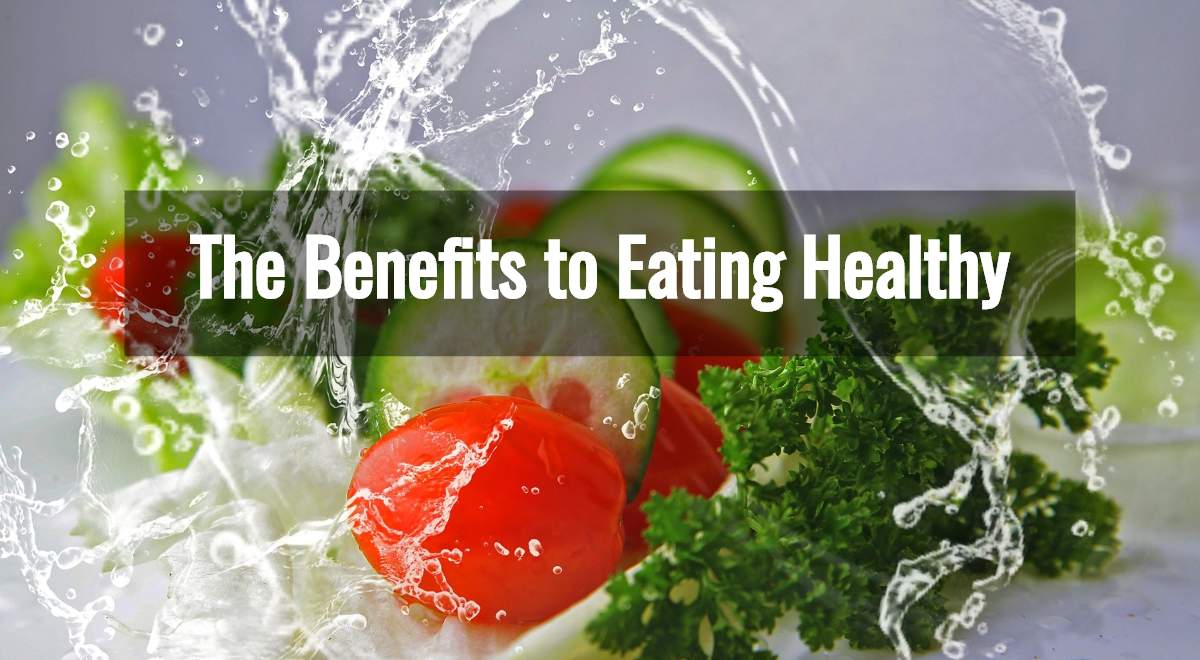Eating healthy foods may reduce the risk of certain cancers, heart disease and diabetes. Healthy foods include vegetables, fruits, whole grains, lean meats and fish and low-fat milk and yoghurt.
Try to eat a variety of nutritious foods from each food group daily. Choose foods that are high in fibre, calcium and protein (lean meats, eggs, nuts and seeds, fortified soy beverages, fish and milk). Try to consume low-sodium salt and fats.
1. Reduces Risk of Cancer
Eating a healthy diet means choosing lots of different foods. It also means limiting added sugars, salt and saturated or industrially-produced trans-fats.
Cancer is a disease where cells grow and divide without control or order. Often, these abnormal cells form tumours. The good news is that eating a healthy diet can reduce your risk of getting cancer.
Generally, plant-based diets – with plenty of fruits and vegetables and few animal products like fish or dairy – have the lowest rates of cancer. Cruciferous vegetables such as broccoli, cabbage, kale and cauliflower are linked to reduced cancer risk too.
Don’t be scared of trying new foods and recipes. But do make sure you check the labels – many junk foods are misleadingly labelled as healthy. And remember, a healthy diet allows for treats occasionally too. The NHS has more information on healthy eating.
2. Lowers Risk of Heart Disease
Heart disease, which can lead to heart attacks and strokes, is the leading cause of death in America. While some risk factors can’t be changed, eating a healthy diet and staying active reduces the chances of developing heart-related health problems.
Foods with a high glycemic load, such as sugary drinks and white bread, have been linked to an increased risk of heart disease; while foods with a low glycemic load, like vegetables, whole grains, fruits, and lean protein, lower your heart-disease risk.
Fatty fish are also great for your heart because they contain omega-3 fatty acids, which have been shown to decrease blood pressure and triglycerides. Fruits and vegetables provide fiber, potassium, folate, vitamins and antioxidants, which all have been associated with reduced heart disease risk.
3. Lowers Risk of Diabetes
A healthy diet includes a wide variety of nutrient-dense foods from all 5 food groups, with little or no added sugar or salt. It avoids foods that contain trans fats and limits processed red meats, deli meats and sweets.
A diet high in sugar, salt and saturated fat increases your risk of developing diabetes. Removing these foods from your diet helps to lower your blood sugar levels and reduces your risk of developing diabetes, high cholesterol and high blood pressure.
A diet that contains plenty of vegetables, fruit, whole grains and lean proteins helps to keep your blood sugar levels stable and reduces your risk of type 2 diabetes. Choose foods with a low glycemic index (foods that don’t spike your blood sugar quickly) like tomatoes, oranges and all berries. Also, choose whole grains such as brown rice, oats and wholemeal bread.
4. Reduces Risk of Osteoporosis
Eating healthy helps reduce the risk of bone loss (osteoporosis) as you get older. A diet rich in calcium keeps bones strong and slows the normal bone loss that occurs with age. Add oily fish, milk and fortified cereals to your diet and make sure you get enough vitamin D. (Vitamin D helps the body absorb calcium.)
Avoid foods high in saturated fat, salt, sugar and caffeine. Also limit alcohol and eat dinner at the same time each day to aid digestion, reduce stress and improve sleep quality.
Talk to a Heiden orthopedist about preventive care, including regular bone density scans. A healthy diet combined with a treatment plan can help slow the progression of osteoporosis. Contact us today to learn more. Bone health is key for staying active and independent as you get older.
5. Reduces Risk of High Blood Pressure
Many people have high blood pressure (hypertension), which can be lowered with a healthy diet that includes fruits, vegetables, whole grains, and lean protein sources. This dietary pattern also reduces salt intake and alcohol consumption, which can raise blood pressure.
Eating healthy foods can help you control your weight and keep you feeling energised. Eating a variety of different foods can provide you with all the nutrients your body needs to stay healthy and protect you from disease.
To eat healthily, choose foods that are lower in saturated fats and industrially produced trans fats, and in sodium (salt). Fill half of your plate with vegetables at each meal and snack, especially dark leafy greens. Choose whole grains over processed or refined bread and pasta, and eat foods that are high in soluble fibre, such as oats, bran, barley, brown rice, quinoa, and hulled wheat.
6. Reduces Risk of Stroke
Observational studies indicate that several stroke risk factors can be reduced through healthy eating. However, properly powered and large randomized trials are needed to determine whether specific nutrients, foods or dietary patterns play a causal role in stroke.
Stroke occurs when a blood clot or ruptured blood vessel cuts off the flow of blood to the brain. A healthy diet helps lower the risk of a stroke by keeping cholesterol and blood pressure levels in check.
Foods that are high in potassium and calcium help reduce blood pressure, while foods rich in magnesium and folic acid help decrease blood cholesterol levels. Choose lean meats, low-fat milk and dairy products, beans and whole grains. Antioxidant-rich fruits, vegetables, nuts and seeds are also beneficial. Taking psyllium fiber, derived from the seeds of the Plantago ovata herb, can also improve cholesterol and triglyceride levels.
7. Reduces Risk of Stroke
Stroke is a major cause of disability and death, and stroke often occurs because of a ruptured blood vessel that cuts off blood flow to the brain. A healthy diet full of antioxidants, vitamins, minerals, and potassium can greatly reduce the risk for stroke.
Limiting red meat and choosing poultry, fish, nuts, whole grains, vegetables and fruits can all help lower stroke risk. A diet rich in the B vitamin folate is also important. Choose low-fat dairy and drink water instead of soda to avoid high sodium levels that can increase stroke risk. Foods that contain the phytonutrient lycopene, found in tomatoes and some other vegetables, can also help lower stroke risk. These foods are high in dietary fiber and antioxidants. They can also improve cardiovascular health and lower blood pressure, which is another risk factor for stroke.
8. Reduces Risk of Diabetes
Eating a healthy diet has a variety of health benefits and helps protect against chronic disease. It can also reduce the risk of nutrient deficiencies.
Foods rich in vitamin C, leafy green vegetables, berries, nuts and seeds, cheese, yoghurt, milk and fatty fish help improve immunity. A healthy eating pattern is also linked with a lower risk of type 2 diabetes.
A well-balanced diet includes a variety of foods from each of the five food groups daily, in the recommended amounts. Discretionary choices, such as takeaway foods, cakes and biscuits should be eaten rarely. The health benefits of a healthy diet include reduced risks of obesity, heart disease, certain cancers and mental illness. It can also help with managing pre-diabetes and lowering blood glucose levels in those with diabetes. It can also lead to a better quality of life, including reducing the risk of depression and mood swings in menopause.
9. Reduces Risk of High Blood Pressure
Eating a healthy diet is a proven way to reduce your blood pressure. A heart-healthy diet consists of vegetables, fruits, whole grains, low-fat dairy and fish and is lower in sodium (salt).
Leafy green vegetables like spinach, cabbage and collard greens are rich in nitrates that help manage high blood pressure. Oats contain beta-glucan and avenanthramide C, which appear to decrease systolic blood pressure in some rodent studies. Include unsweetened oats for breakfast and choose whole-grain bread for your sandwiches. Nuts, especially unsalted pistachios, are another good option to help lower your blood pressure.
Avoid high-sodium foods, such as processed meats and canned tuna. Become a label reader, looking for the words “low sodium” on packaged food. A diet that is high in calcium, magnesium and potassium can also lower your blood pressure. Rigorous trials show that eating a heart-healthy diet can reduce or eliminate the need for medication in people with hypertension.
10. Reduces Risk of Osteoporosis
A diet that includes nutrient-rich foods, including healthy fats, lean protein, whole grains, fruits and vegetables, and avoids excess sodium and sugar, reduces the risk of osteoporosis. The health benefits of eating healthy foods also help prevent chronic diseases and improve mood.
Calcium, a key mineral that keeps bones strong, helps decrease the risk of osteoporosis, which becomes more common as people age. A regular intake of dairy products is important, such as low-fat milk, yogurt and cheese.
However, a diet high in animal proteins such as meat and poultry can actually detract from bone health. This is because animal proteins may lead to the loss of more bone density than calcium ingested, according to research from Cornell University. Avoid fatty meats, full-fat cheese and fried chicken. Opt for baked, broiled or grilled options instead. Also, limit your consumption of oils containing saturated fat, which are found in meats and dairy products, palm oil, coconut oil, butter, margarine and some snack foods.




